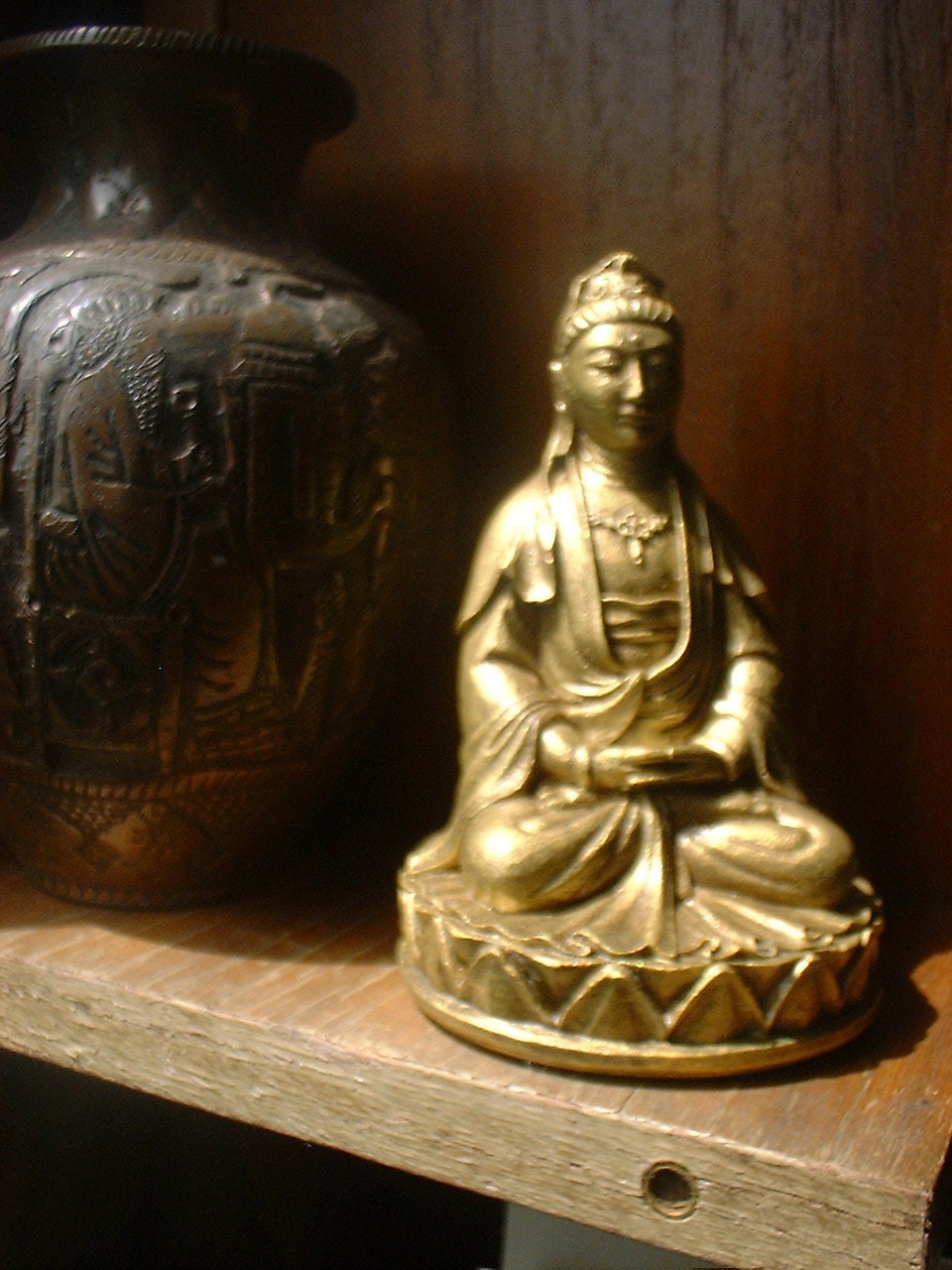
I learned to meditate at a Zen temple where my primary official role was doan: the person in charge of the bells. But I was actually in charge of all of the ritual things that weren't strictly the priest's prerogative, so all of that goes hand in hand with meditation for me. Zazen just doesn't feel right if
there's no incense, chimes, candles, flowers, chanting, or altar. I didn't do anything about this for a long time because it felt really silly, which is a completely stupid reason to not do something. Classical conditioning is a thing. If a specific atmosphere or series of behaviors puts me quickly into the frame of mind I'm after due to past immersion and repetition, then I have a cheat code that many others would pay thousands of dollars for (as evidenced by retreat and workshop prices at monasteries).
So now I have a zafu, traditional Japanese incense, a candle, and I've just ordered a chime. Most importantly, I have a room for nothing but zazen. But having a Buddha statue still feels really weird to me.
It felt even more so the first time around, especially when I was expected to bow to the thing constantly, but over time it became important as a symbol of why I was doing what I was doing. The statue we used was Kannon, not Gautama. Kannon is a Bodhisattva, an Eastern evolution of Avalokiteśvara, who vowed to put off final enlightenment until all sentient beings were saved from suffering. She is not actually a Buddha yet, and in Mahayana sects like Zen, practitioners walk the Bodhisattva path rather than seeking Buddhahood directly.
My altar feels empty and my practice undirected without a symbol of why I'm doing what I'm doing. But although Kannon seems close to right, I also feel like she symbolizes the misconception that it's possible to save the world merely by meditating, cultivating compassion, and acting compassionately on a small scale; and also the misconception that we have eons to get it right.
So how might an effectively altruistic atheist, whose meditation practice is the foundation of her art of rationality, symbolize her mission?
2 comments:
Add a poster of The Blue Marble to the altar?
Things representing important milestones in your progress, such as a Catholic-style crucifix and something to remind you of your current job.
Post a Comment